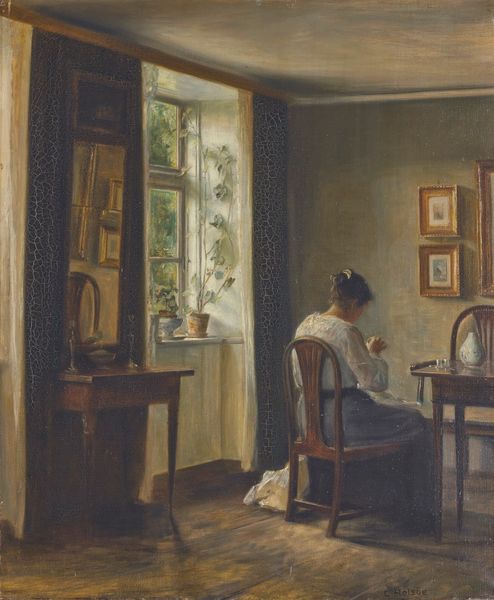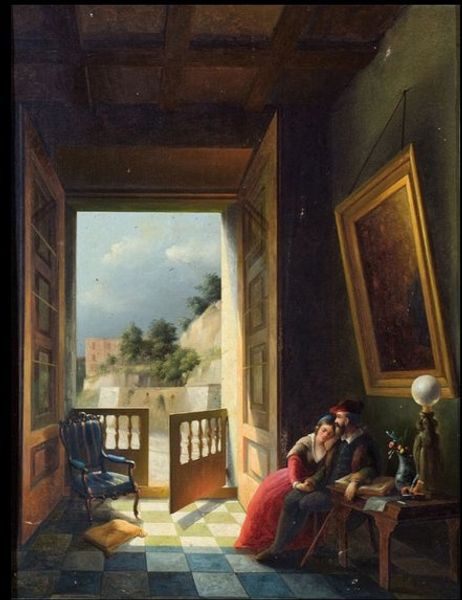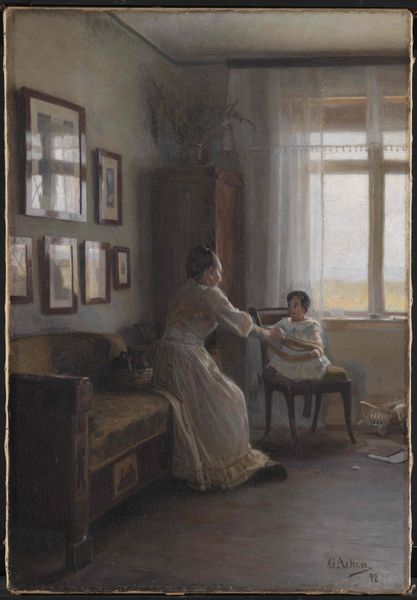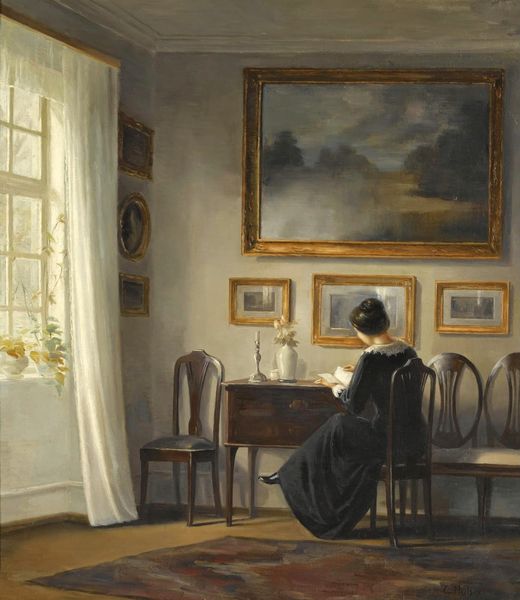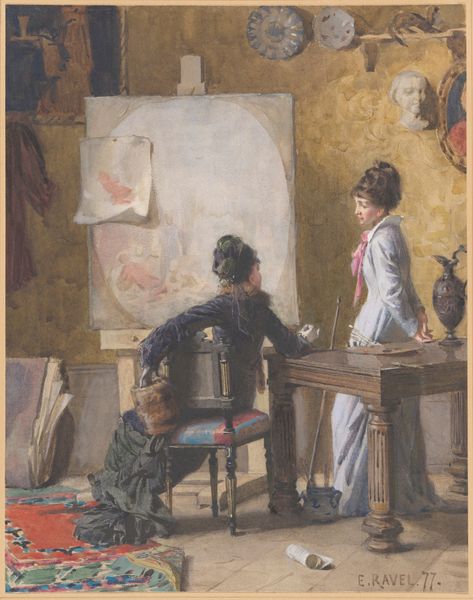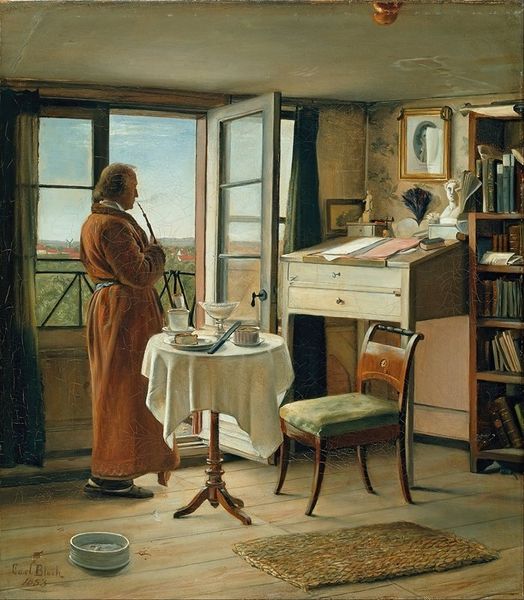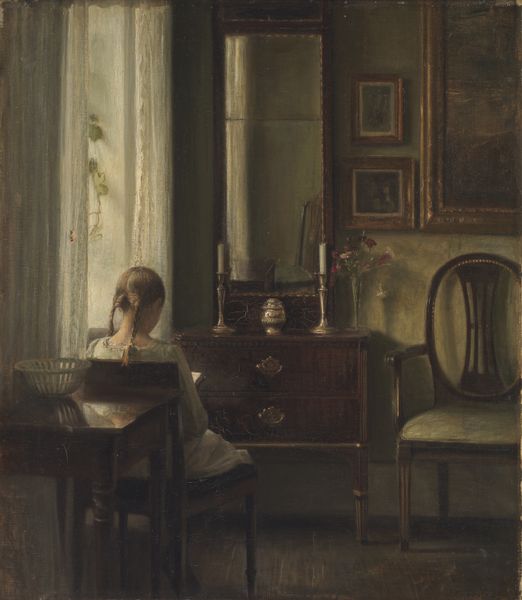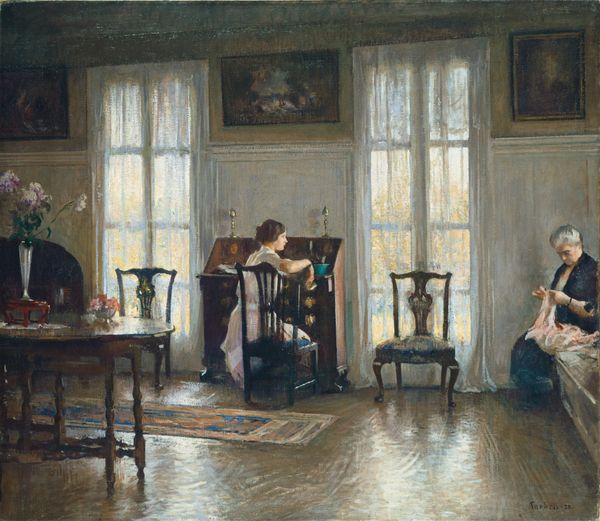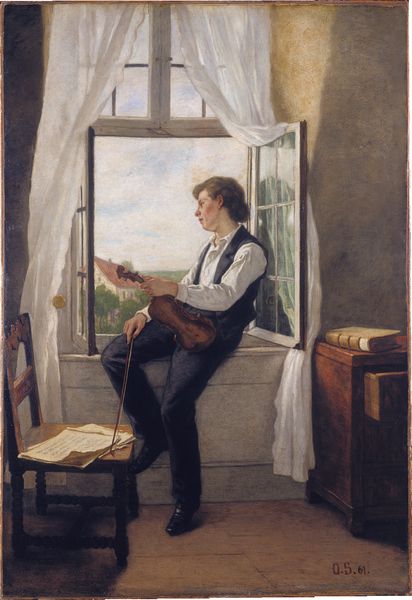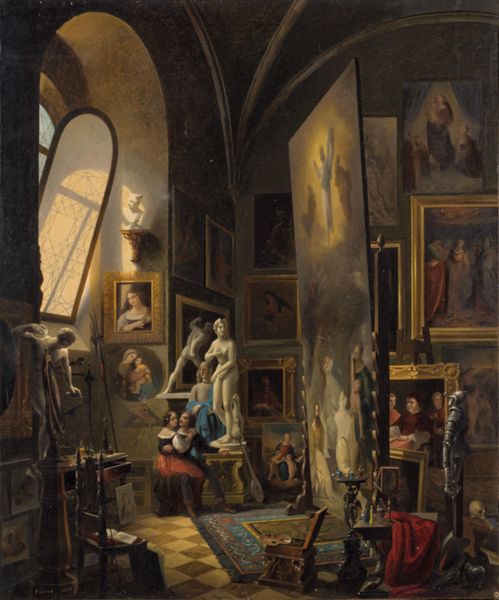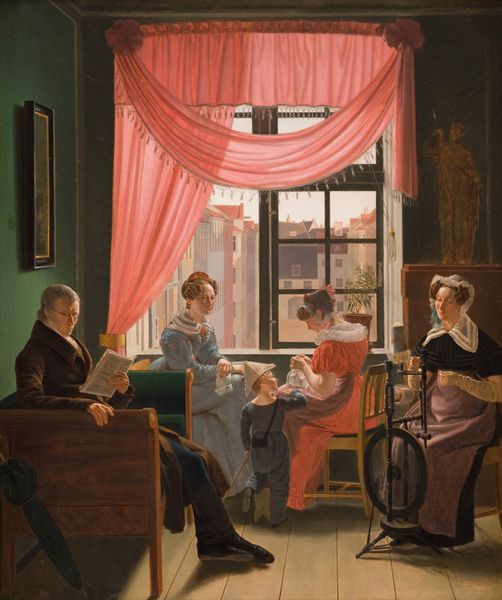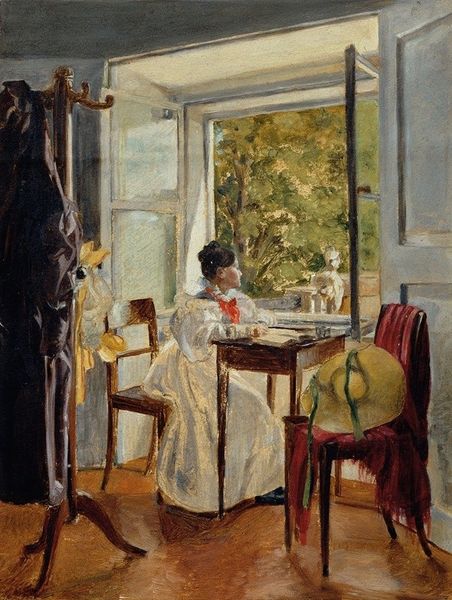
Léon Pallière (1787–1820) in His Room at the Villa Medici, Rome 1817
0:00
0:00
painting, oil-paint
#
portrait
#
painting
#
oil-paint
#
landscape
#
figuration
#
oil painting
#
romanticism
#
men
#
cityscape
#
genre-painting
#
history-painting
#
italian-renaissance
Dimensions: 22 7/8 × 17 7/8 in. (58.1 × 45.4 cm)
Copyright: Public Domain
Curator: Let's turn our attention to Jean Alaux's 1817 oil painting, "Léon Pallière (1787–1820) in His Room at the Villa Medici, Rome," currently residing at The Met. Curator: My first impression is how enclosed this bright, romantic vision feels. You see a young man in a confined space, gazing at a landscape that seemingly excludes him. The tension between interiority and exteriority here speaks volumes. Curator: Precisely! Alaux masterfully constructs pictorial space, contrasting the structured interior with the unbounded landscape. Note the geometry, how the strong verticals and horizontals of the room lead the eye outward. And consider the light, its source and diffusion! Curator: And consider what it might mean to be a young artist stuck in Rome! Pallière was part of a cohort sent to the Villa Medici—essentially an artistic colony subsidized by the French state. How much autonomy did these artists truly possess? The painting hints at a longing for freedom, a resistance to artistic constraint. Curator: Resistance? The subtle orchestration of colors—the muted grays and browns punctuated by vibrant landscape greens—suggests harmony, not conflict. And see how Pallière’s figure echoes the distant trees, visually linking him to the vista beyond. It is art creating art in conversation with landscape. Curator: I disagree. His averted gaze speaks of alienation. Also, his leaning stance feels precarious and transient—this is not harmony, but rather a young artist trying to negotiate his sense of self in a historically loaded and surveilled place. Curator: Loaded, perhaps, but Alaux clearly presents the architecture itself as a framework—literally framing the vista. The classical ceiling contrasts sharply with the looser handling of paint in the landscape, highlighting different pictorial conventions and the relationship between artifice and nature. Curator: All these formal observations—while valid—must engage with a crucial consideration of institutional power and the complex negotiation between artistic creation and societal constraints. Without that, we miss crucial readings here. Curator: Perhaps. Still, focusing too much on extrinsic narratives can eclipse what’s undeniably successful about Alaux's technical and aesthetic command within the frame. Curator: Fair enough. Though, ultimately, it’s the dialogue between the artwork's intrinsic properties and its surrounding social matrix that enriches our appreciation, right? Curator: I concur; this delicate tension is truly, perhaps, the key to sustained and enriched insight and wonder here.
Comments
No comments
Be the first to comment and join the conversation on the ultimate creative platform.
